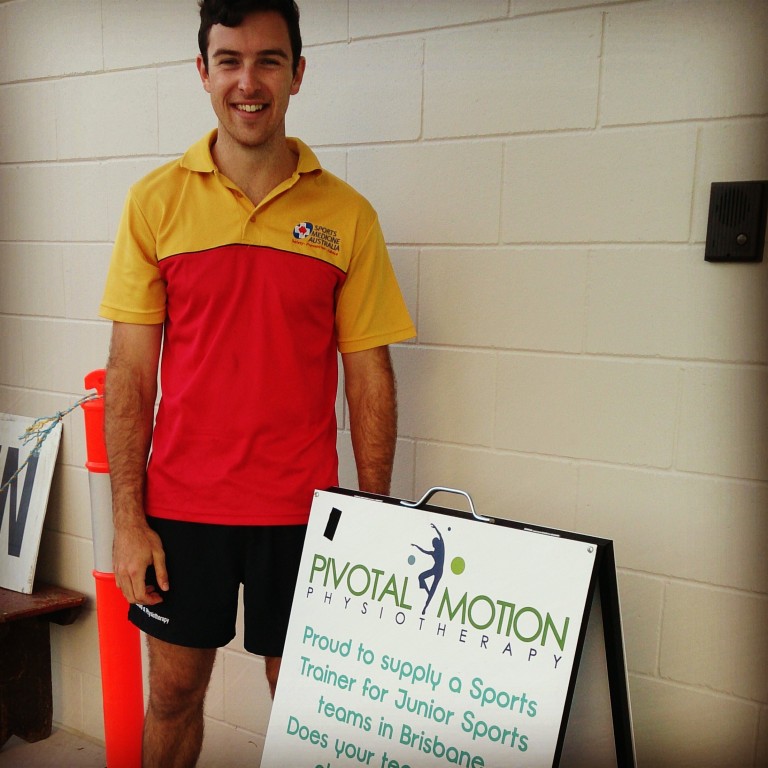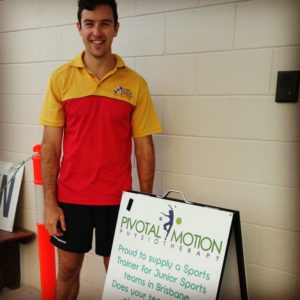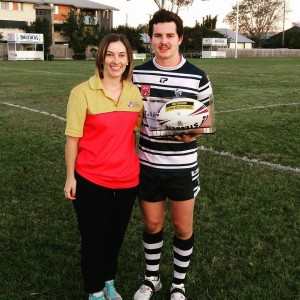
What does being a Brisbane sport trainer involve?
To be an effective Brisbane sport trainer, it all begins with preparation. You must understand the sport, the level played and the age of the athletes. Knowing types of injuries that can commonly occur and how best to manage mean an easier day with less stress.
*Prior to arriving
Preparation also involves preparing a good first aid kit and knowing where everything is in the kit. This means efficiency in a high-pressure environment. Fumbling around unable to find what you are looking for only increases stress and can fill the injured player with doubt about your ability to care for them.
Arriving to the playing fields!
When you first arrive, there is a feeling of excitement and anticipation about what the day may involve. A quick hello to the regulars and then it’s time to get ready for the sport to begin.
It’s important to set up in a nice comfortable spot where you can see the action on the field. If in charge of multiple fields, having a nice central post where people can clearly identify your location is important.
Being prepared is the most important thing. Ice bags should be filled and ready in the cooler. Also, be aware of where emergency entries are to the playing fields and who is likely to oversee directing the emergency services to the incident.
Let the games begin!!
Now it’s time to sit down, stay in the shade and watch some sport. Try to show interest in the sport by actively watching it. This makes the day more enjoyable and mechanisms of injury won’t be missed. Having a visual of an incident gives you an upper hand in understanding severity and what potentially has been injured. It also aids in determining whether you need to enter the playing field or allow time for the player to get up in less serious injuries. You don’t want to being going out on the field every two minutes for grazed knees and grass burns.
When you are called upon, it can be a little hectic out there. Relax and stay calm! When you are relaxed, the injured player is more relaxed. Try to be clear and get the information you want to. Don’t be influenced by coaches, trainers or players. Make clear decisions about what you think has happened and always remember your primary focus is THE SAFETY OF THE PLAYER. It is not your job to help a team win the game by allowing a player to return and risk serious injury. Once you have done your minimum testing on the field it’s time to make the call. Can they stay on and play or do you take them off for further assessment?
They stay on;
- Firstly, if you determine they can stay on that is only half the decision – they have to confirm they want/think they can play on
- Watch them closely to see if they are performing the same
- Are they limping?
- Do they look like they are in pain?
- After a head injury – determine whether you think they are stable, coordinated and look aware of what is occurring around them
- If at any time, you think there is an issue or the player goes down again – make a decision, be firm and remove the player from the playing field (sometimes easier said than done!)
They come off for further assessment;
- Discuss with the player how they feel, with time is there an improvement
- If they begin to improve, further challenge them – jogging à running à sport specific activities
- If they have shown significant improvement and you are satisfied they can return to the playing field let the coach/relative staff know
- Keep in contact with the coaching staff throughout the process to ensure they are not confused about what potential damage has been, or may be caused (good relationship with coaching stuff makes life a lot better!!!)
- If no improvement/deterioration refer for further medical attention (local GP, physiotherapist, hospital if necessary)
An ambulance has been called;
- The person on the phone is going to ask some questions to determine the severity of the injury – remember BE PREPARED!
- What has happened?
- How old is the player?
- What sort of condition is the player in now? (breathing, consciousness etc.)
- Where has, the incident occurred and how will the ambulance access you?
- Any significant medical history?
- Remember to send someone to direct the ambulance to your location, your responsibility is the player – DON’T LEAVE THE PLAYER!
- Once you have come to this decision you can make the decision of whether the player shouldn’t be moved or if you can clear the playing surface by assisting the player off the field
- Remember primary goal – SAFETY OF THE PLAYER! You are under no obligation to jeopardise the safety of the player, in an attempt to allow play to continue.
And that’s a wrap!
The game has finished and it is almost time to go home. Double check with teams, coaching staff whether there are any niggling injuries and offer an ice packs you have spare. Ensure all necessary paperwork has been completed – anytime you have applied first aid you have a legal obligation to record what has occurred and your intervention. Gaining contact details for people you have treated is important so you can follow up what was the outcome. Not only is this courteous, but it helps you understand and adds another learning experience. Now it’s time to pack up your belongings, clean up any necessary mess and head home after a hard day’s work!!!
Looking for a sport trainer or suffering from a Sports Injury? Pivotal Motion has been providing exercise physiology and physiotherapy Newmarket, Ashgrove and Windsor-wide for over 10 years. Call us today on 07 3352 5116 or book online.





